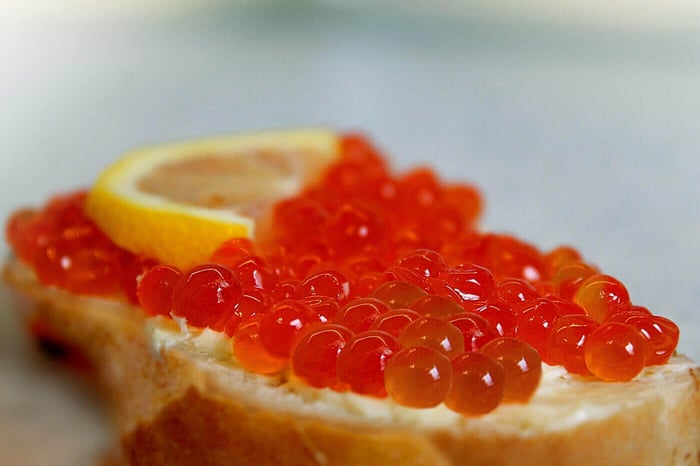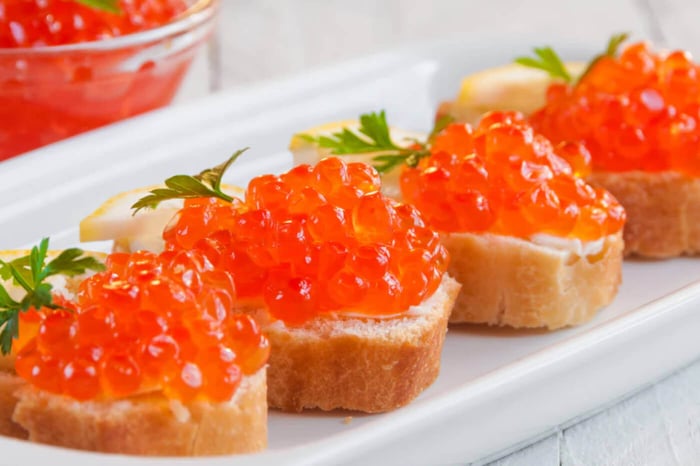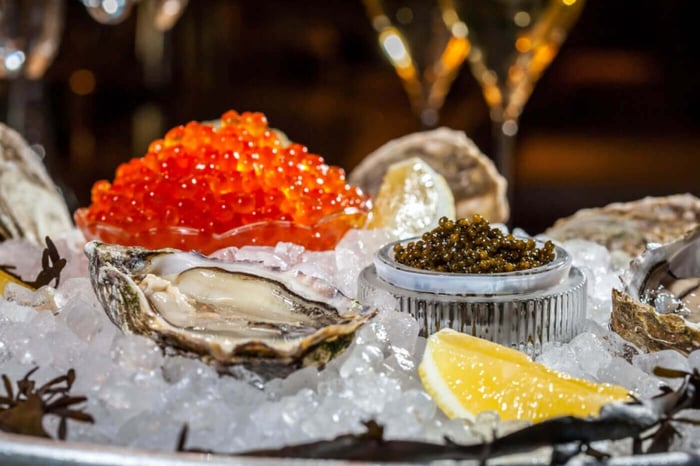
Caviar Myths: Caviar, the luxury delicacy of fish eggs, has long been a symbol of opulence and sophistication. However, along with its prestige, caviar has accumulated a multitude of myths and misconceptions. These misunderstandings can cloud the true nature and enjoyment of this exquisite treat. In this article, we aim to debunk common caviar myths and misconceptions, providing a clearer understanding of what caviar truly is and how best to appreciate it.
Myth 1: All Caviar Comes from Russia
One of the most pervasive myths about caviar is that all of it comes from Russia. While it’s true that Russia, particularly the Caspian Sea, has been historically renowned for its high-quality sturgeon caviar, this is not the only region where exceptional caviar is produced. Countries like Iran, the United States, and even parts of Europe, such as France and Italy, have developed robust caviar farming industries. In fact, advancements in aquaculture have allowed for the sustainable farming of sturgeon, leading to high-quality caviar production across the globe. This diversification not only makes caviar more accessible but also supports the conservation of sturgeon populations.
Read: How To Eat Caviar - A Timeless Russian Tradition
Myth 2: Caviar Must Be Extremely Expensive
Caviar's reputation for being extraordinarily expensive is partly justified, as the most prized varieties, such as Beluga and Osetra, can indeed be costly. However, the notion that all caviar is prohibitively expensive is a misconception. The price of caviar varies significantly based on factors such as the type of sturgeon, the quality of the eggs, and the production process. For example, American paddlefish caviar and salmon roe are more affordable alternatives that still offer a delightful taste experience. The rise of sustainable caviar farming has also introduced more competitively priced options without compromising quality, making this delicacy more accessible to a wider audience.
Myth 3: Only Fresh Caviar is Worth Eating
Freshness is often a critical factor in the quality of many gourmet foods, but in the case of caviar, this is a nuanced topic. While fresh caviar is indeed a premium choice, preserved caviar—when stored correctly—can be equally delicious. High-quality caviar is typically cured with just the right amount of salt to enhance its flavor and extend its shelf life. This curing process, known as malossol, ensures that the caviar retains its delicate taste and texture over time. Moreover, many experts argue that some caviars develop a more complex flavor profile as they age slightly in their tins, much like fine wines or cheeses.
Read: Osetra, Ossetra, Oscietra... What's the Correct Spelling?
Myth 4: Caviar is Always Black
Another widespread misconception is that all caviar is black. In reality, caviar comes in a variety of colors, ranging from pale golden yellow to deep black, depending on the species of sturgeon and their environment. For instance, Beluga caviar is known for its large, pearlescent gray eggs, while Osetra caviar can range from dark brown to golden. Siberian sturgeon caviar often appears jet black, but variations in diet and habitat can lead to differences in color even within the same species. This diversity in color not only adds to the visual appeal of caviar but also indicates a range of flavor profiles and textures to explore.

Myth 5: Eating Caviar is Unethical
The concern over the ethical implications of consuming caviar, particularly from wild sturgeon, is valid given the historical overfishing and decline of sturgeon populations. However, the rise of sustainable and ethical aquaculture practices has significantly mitigated these concerns. Many caviar producers now focus on farmed sturgeon, using methods that prioritize the health of the fish and the environment. Certifications such as those from the Aquaculture Stewardship Council (ASC) or Best Aquaculture Practices (BAP) ensure that the caviar is produced responsibly. By choosing caviar from certified sources, consumers can enjoy this delicacy without contributing to the depletion of wild sturgeon populations.
Myth 6: Caviar Should Only Be Eaten on Special Occasions
While caviar has traditionally been associated with special occasions and lavish celebrations, it doesn’t need to be reserved solely for these events. The increasing availability and variety of caviar mean that it can be enjoyed in more everyday settings as well. Caviar can be incorporated into a range of dishes, from simple appetizers like blinis and crème fraîche to more elaborate culinary creations. Experimenting with caviar in different contexts can enhance everyday meals, bringing a touch of luxury to the ordinary and making caviar a more integrated part of diverse culinary experiences.
Conclusion
Caviar, with its rich history and association with luxury, is often surrounded by myths and misconceptions that can obscure its true nature and enjoyment. By debunking these myths, we gain a clearer understanding of the diversity, accessibility, and ethical considerations surrounding caviar. Whether you're a seasoned connoisseur or a curious novice, knowing the facts about caviar can enhance your appreciation and enjoyment of this exquisite delicacy. As sustainable practices continue to evolve, caviar's future looks bright, promising a balance between luxury and responsibility that can be enjoyed by many.
About the Author
 Igor Fishbeyn - Caviar Purveyor
Igor Fishbeyn - Caviar Purveyor
Igor Fishbeyn is purveyor of fine sturgeon caviar and creator of the Skazka Caviar brand. He is an expert with decades of experience specializing in importing, wholesaling, and retailing the finest quality caviar in the world. Igor frequently writes about caviar news and various topics about the caviar industry. He lives in San Francisco with his wife and daughter.
Shop Skazka Caviar
Browse Our Exclusive Caviar Collection
“River Beluga” Kaluga Sturgeon Caviar
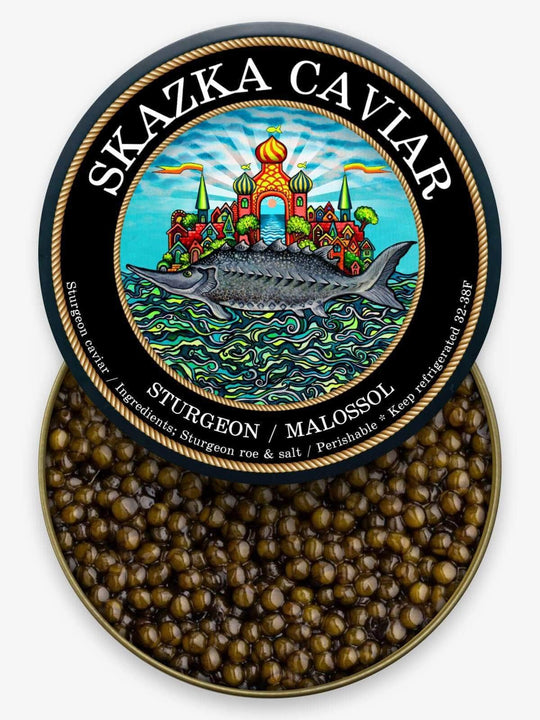
$295
$395
This large, robust caviar is a favorite of connoisseurs. Its firmness provides a satisfying texture that will keep you coming back for seconds and even thirds. Its luxurious chocolate brown color is perfectly evocative of its rich taste. Hints of… read more
“Oprah’s Favorite” Russian Osetra Caviar
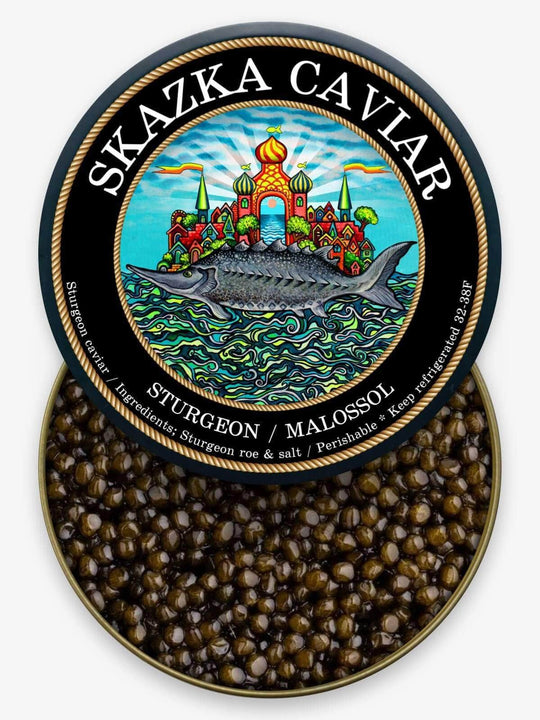
$295
$335
This medium-sized caviar is sure to be the star of any party or function you may throw. Its deep chocolate brown color is indicative of its rich and buttery flavor. Amber Osetra caviar has one of the cleanest tastes of any… read more
"Russian Czar" Beluga Sturgeon Caviar
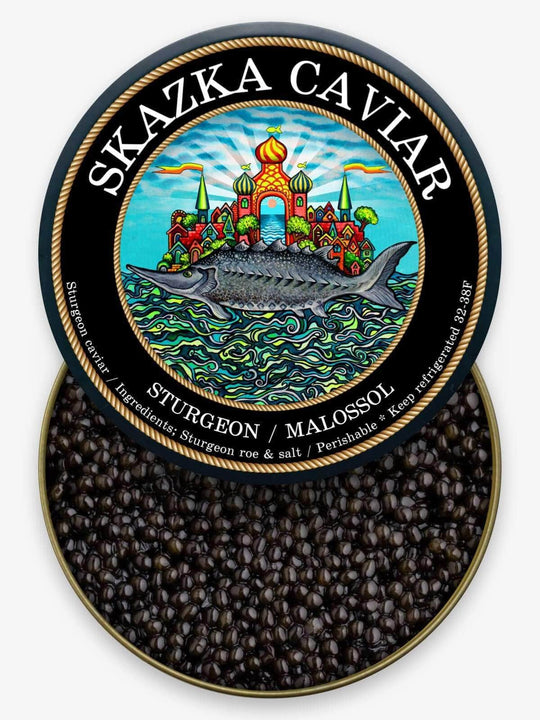
$495
$599
With an incomparable richness, “Russian Czar” Beluga Sturgeon Caviar is a knockout when it comes to fine caviar. Traditionally harvested in Russia, this caviar holds a tradition of greatness throughout history. With buttery notes that linger on the taste buds,… read more
“Tsar Reserve” Golden Osetra Caviar
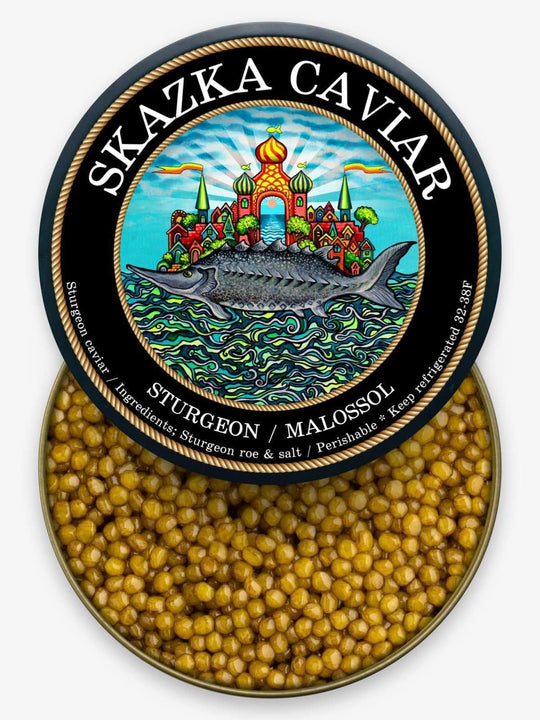
$395
Anyone with a taste for fine caviar will love “Royal Reserve” Golden Osetra Caviar. Its beautiful deep amber color is the first sign you’ll have that you’re in for something special, and once it hits your tongue you’ll know just… read more
Shop Caviar By Type
Shop Black Caviar | Shop Red Caviar | Shop Caviar Accessories
Shop Beluga Caviar | Shop Kaluga Caviar | Shop White Sturgeon Caviar
Shop Osetra Caviar | Shop Salmon Roe | Shop Albino Sturgeon Caviar




